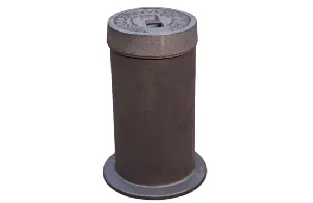gate valve 1 1 4 inch
Understanding 1 1/4 Inch Gate Valves Features, Applications, and Benefits
Gate valves are essential components in many fluid transportation systems, serving as on/off controls that allow or restrict flow. Among the various sizes available, the 1 1/4 inch gate valve is a commonly used size across industrial, commercial, and residential applications. In this article, we will explore the features, applications, and benefits of 1 1/4 inch gate valves, providing insights into their significance in fluid control systems.
What is a Gate Valve?
A gate valve is a type of valve that opens or closes by lifting a barrier (the gate) out of the path of the fluid. Unlike globe valves, which control flow through throttling, gate valves are designed to provide a straight-line flow path with minimal turbulence. This feature allows for lower pressure drops across the valve and makes them suitable for applications where the full flow of the fluid is needed without restriction.
Key Features of 1 1/4 Inch Gate Valves
1. Size Specification The term 1 1/4 inch refers to the nominal size of the valve, which means it can handle pipes or systems designed for this diameter. The actual size may differ slightly due to manufacturing tolerances, but it is an essential specification when matching the valve to existing piping systems.
2. Material Options Gate valves are manufactured using a variety of materials to suit different applications. Common materials include brass, stainless steel, cast iron, and PVC, each offering different levels of corrosion resistance, strength, and temperature tolerance. Selecting the right material is crucial for ensuring longevity and reliability.
3. Pressure Ratings 1 1/4 inch gate valves are available in various pressure ratings, typically ranging from 150 to 300 PSI or more. It is important to choose a valve that can handle the pressure of the specific application to prevent leaks or failures.
4. Actuation Gate valves can be operated manually or automatically. Manual valves are turned using a handwheel, while automatic valves can be operated via electric, pneumatic, or hydraulic actuators, offering flexibility depending on the system’s requirements.
5. Flow Direction While gate valves are generally bi-directional, it’s essential to ensure correct installation to prevent flow-related issues. The design allows for effective sealing in both directions, ensuring a tight shutoff.
Applications of 1 1/4 Inch Gate Valves
1. Water Supply Systems One of the most common applications for 1 1/4 inch gate valves is in municipal and industrial water supply systems. They are used to control the flow of water into various distribution systems.
gate valve 1 1 4 inch

2. Oil and Gas Industry In the exploration and transportation of hydrocarbons, gate valves are used for controlling the flow of oil and natural gas, providing isolation and control in pipelines.
3. Chemical Process Industries Gate valves can be found in chemical processing applications for controlling the flow of various fluids. Selecting the appropriate material is crucial, as some chemicals can be highly corrosive.
4. HVAC Systems In heating, ventilation, and air conditioning systems, 1 1/4 inch gate valves are employed to control the flow of steam or water.
Benefits of 1 1/4 Inch Gate Valves
1. Low Flow Resistance Since gate valves allow for straight-through flow, they present a lower obstruction than other types of valves, minimizing pressure drop in the system.
2. Durability With appropriate material selection, gate valves can withstand high pressures and harsh conditions, contributing to their longevity and performance reliability.
3. Simplicity The straightforward design of gate valves makes them easy to operate and maintain. They are less prone to clogging and require minimal maintenance compared to other valve types.
4. Effective Shutoff When closed, gate valves create a tight seal, preventing leaks and ensuring efficient fluid management.
Conclusion
1 1/4 inch gate valves are vital components in a wide array of piping systems, providing reliable flow control across various industries. By understanding their features, applications, and advantages, users can make informed decisions when selecting the right valve for their specific needs. Whether in water supply, oil and gas, or chemical processing, these valves play a key role in ensuring efficiency and safety in fluid handling systems.
-
The Smarter Choice for Pedestrian AreasNewsJun.30,2025
-
The Gold Standard in Round Drain CoversNewsJun.30,2025
-
The Gold Standard in Manhole Cover SystemsNewsJun.30,2025
-
Superior Drainage Solutions with Premium Gully GratesNewsJun.30,2025
-
Superior Drainage Solutions for Global InfrastructureNewsJun.30,2025
-
Square Manhole Solutions for Modern InfrastructureNewsJun.30,2025
-
Premium Manhole Covers for Modern InfrastructureNewsJun.30,2025
